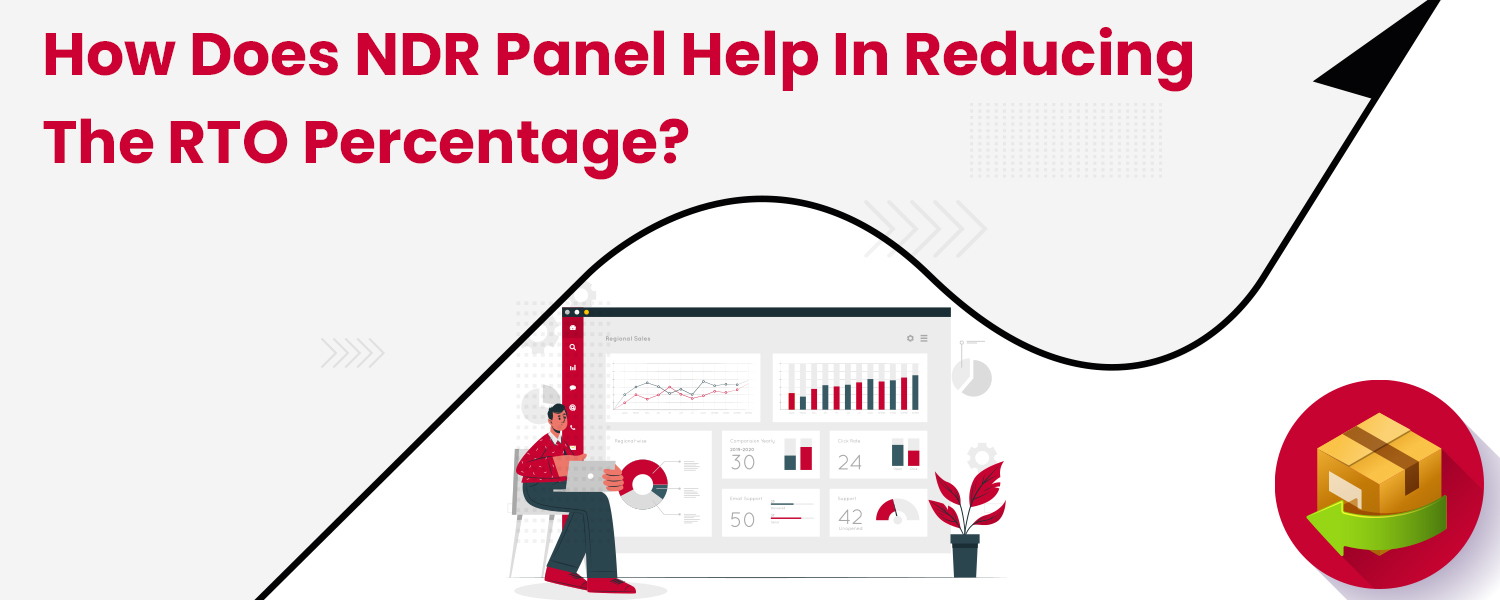The rising number of return orders leads to several issues for online sellers. Currently, most customers who pay by cash on delivery (COD) have to pay the return cost of the products purchased from online stores. Subsequently, such events lead to businesses losing out on customers. Irrespective of the high margin on each sale and increasing ROI, high RTOs can interrupt your growth. There are multiple ways to bring down your RTO percentage, among which the use of an NDR panel is the most important.
In this blog, we’ll talk about Non-Delivery Report (NDR), Return to Origin (RTO), and how an NDR panel helps in RTO reduction. If the given information is deployed optimally, you can significantly reduce your RTO percentage.
What Does NDR Stand For?
When a purchase order is not delivered or a delivery attempt fails, a courier company generates an NDR. Here, the online seller has two options when faced with non-delivery reports:
- Make a second delivery attempt for a failed delivery
- The unsuccessful delivery should be marked as RTO right away
In RTO, all returned items are dispatched to the warehouse and held until they are inspected by quality analysts or destroyed. However, there is no set timeframe for this process. In this manner, keeping an item that should have been with the client is not a lucrative business strategy.
Inventories are also critical because no one wants to be locked into a long-term contract with their goods. Besides, cash-flow issues will arise as a result. Therefore, both the buyer and the seller would be required to pay the seller’s freight charges (return and forward). It takes place when no money is made from the deal. In addition, it wastes warehouse space and makes customers unhappy.
Keeping the buyer and seller up to date is therefore critical. As a result, both parties favor the transaction benefit. In an NDR, the seller has the opportunity to request a re-attempt. On the other hand, the buyer will know exactly when the courier provider will arrive because they will receive an arrival notification. In conclusion, non-delivery and returns are significantly reduced.
In What Ways Does RTO Impact An Online Business?
The RTO-marked undelivered order eventually reaches the inventory and its quality can worsen if it’s kept in the warehouse for long before a quality check. Furthermore, the RTO-locked inventory disrupts the cash flow. Thus online sellers must incur additional expenditures beyond transportation costs (reverse and forward). As a result, extra warehouse space is used, and customer satisfaction and retention also suffer.
Below is the total loss that online sellers have to suffer as a result of RTO shipments:
- Both reverse and forward shipping costs are included
- Repackaging costs are incurred
- Deterioration of the product
- Costs associated with the management of recalled stock
- Stocks Are Locked In Your Account
- Waste/Scrapping Cost
- It is like there is no more probability
- The price of customer turnover
NDR Management Decreases RTO By Automating It
A failed delivery attempt means some actions must be performed to ensure that the product is delivered effectively. Hence, automation arranges these processes in NDR management. The automation process includes regularly checking non-delivery reports and taking appropriate actions against undelivered orders (regardless of the reason for non-delivery), i.e., following up on unfulfilled orders that were not delivered.
How Do Shipping Aggregators Help Online Sellers?
To assist online sellers respond to shipment updates in real-time, a shipping aggregator collaborates with carrier partners to receive regular information on cargo delivery status. Therefore, a shipping aggregator allows online sellers to act on undelivered goods as soon as the carriers’ side updates them, excluding additional manual processes. To improve contact with consumers, online sellers can use automatic follow-ups.
Over time, the flow of follow-up markings becomes:
- The carrier partner attempted to deliver a product to the address supplied by the consumer but was unsuccessful.
- If the package is still marked as undelivered, the delivery person will leave a note explaining why it was not received.
- Online sellers are ready to take action as soon as the delivery status is reflected on your NDR dashboard.
- Re-attempt for delivery can be marked, or RTO can be selected.
- If a re-attempt is necessary, the carrier partner may try again the following day or the day after.
Conclusion
It is critical to understand RTO if online sellers want to maximize their profit because unexplained non-delivery hurts their customers’ happiness since buyers do not like to see their packages not delivered. Additionally, suppose an online seller has a bad returns procedure, which includes obstacles like paying for shipment or using restrictive freight carriers, delaying the issuance of a refund, etc. In that case, it risks losing a client for good if its returns process is subpar.
However, if an online seller chooses a logistics aggregator like NimbusPost that is both efficient and technologically advanced, it will have access to a wider range of courier services. Plus, NimbusPost’s fast shipping service helps in reducing the RTO percentage. By getting real-time access to the NDR panel, you will be able to have more control over undelivered orders. All these benefits along with round-the-clock assistance eventually help in increasing your profit and overall business growth.




